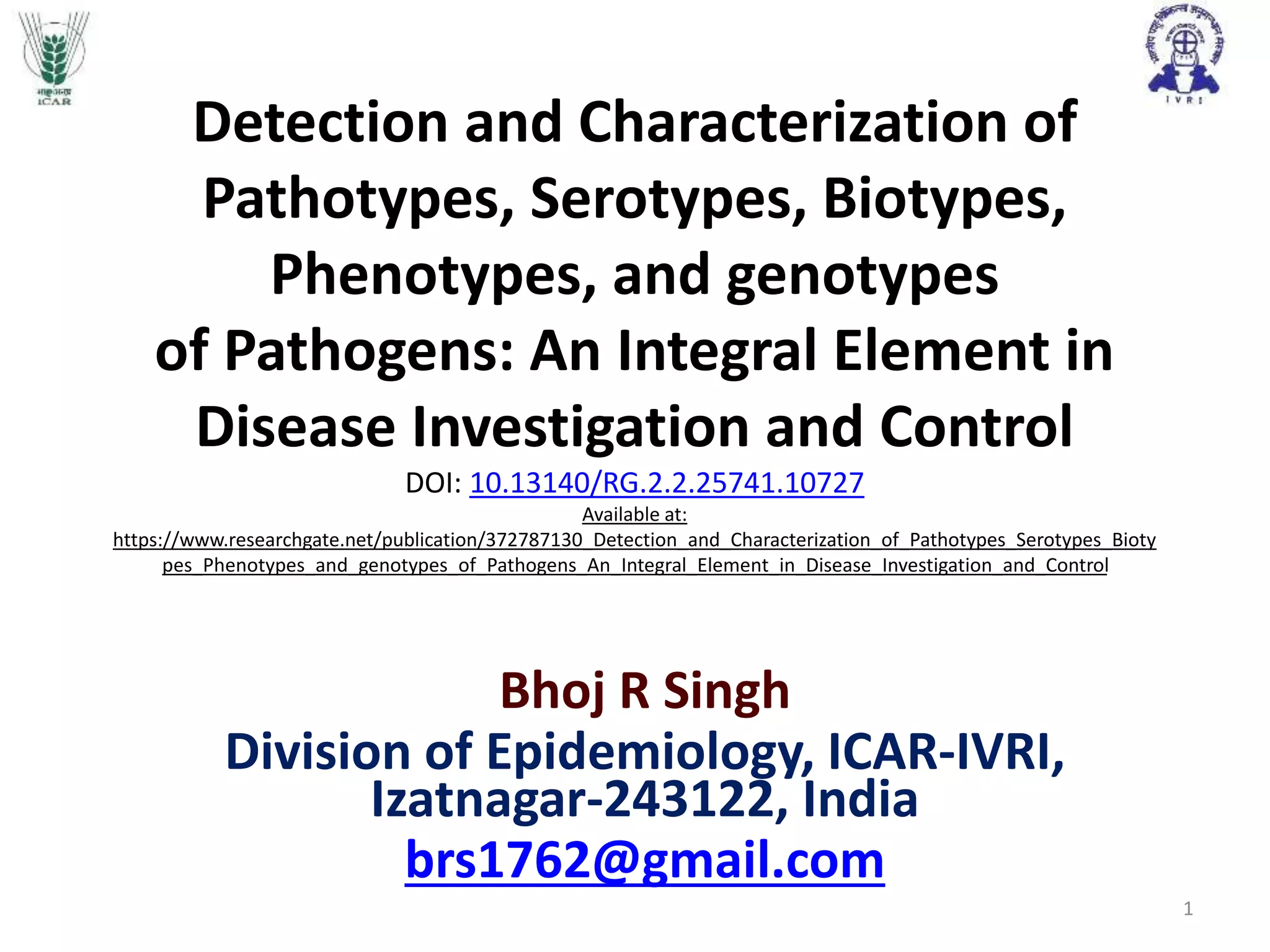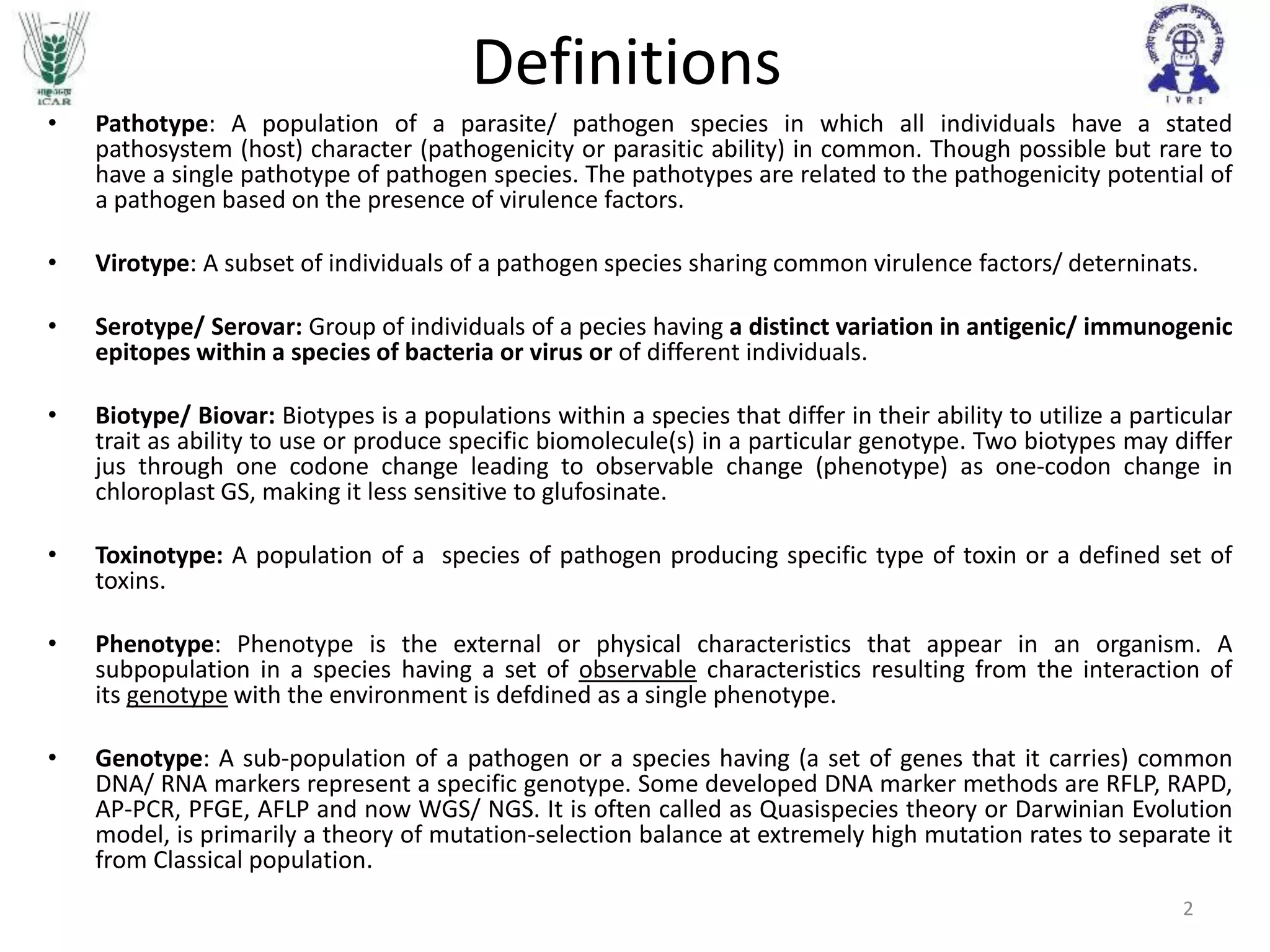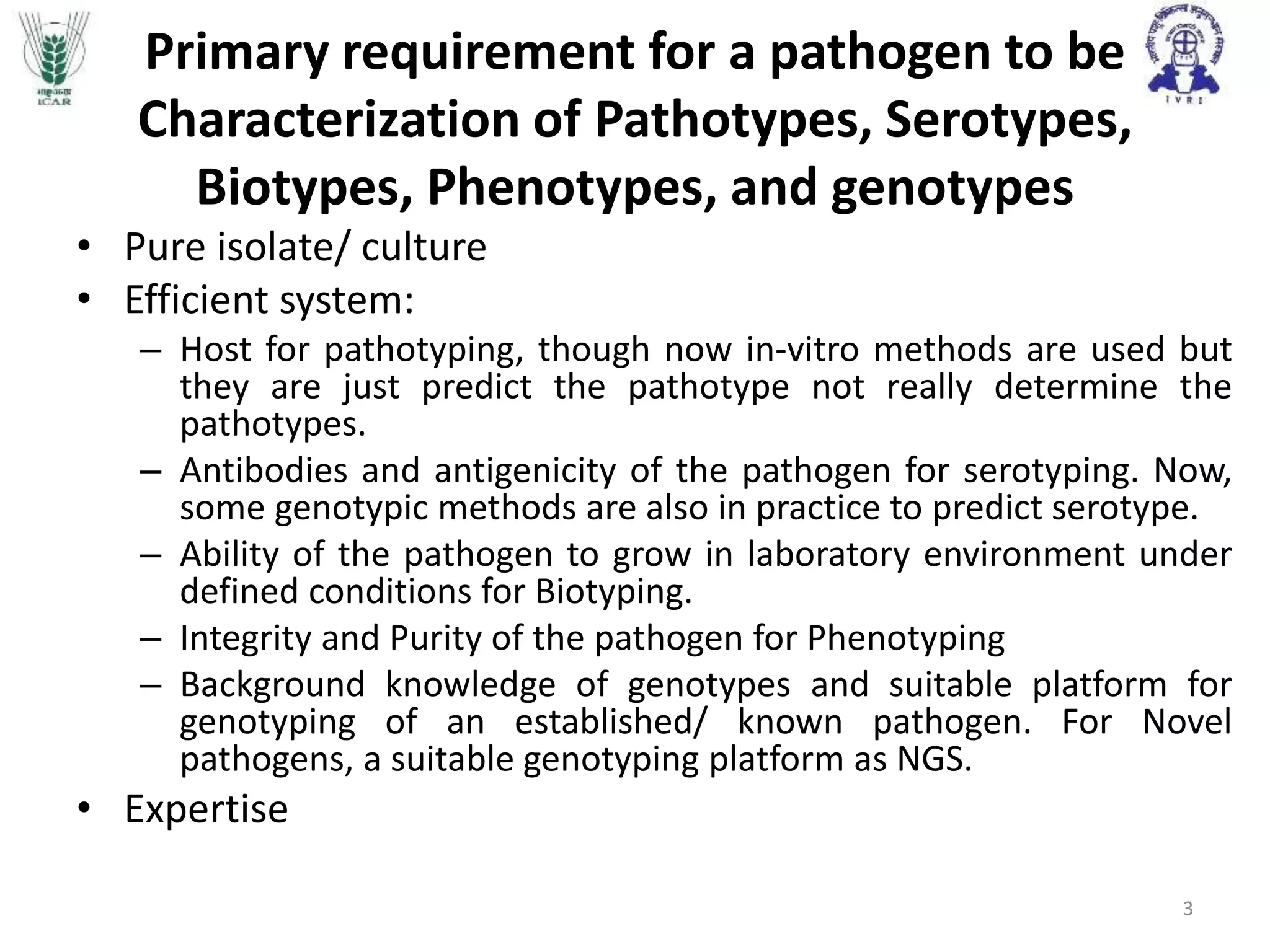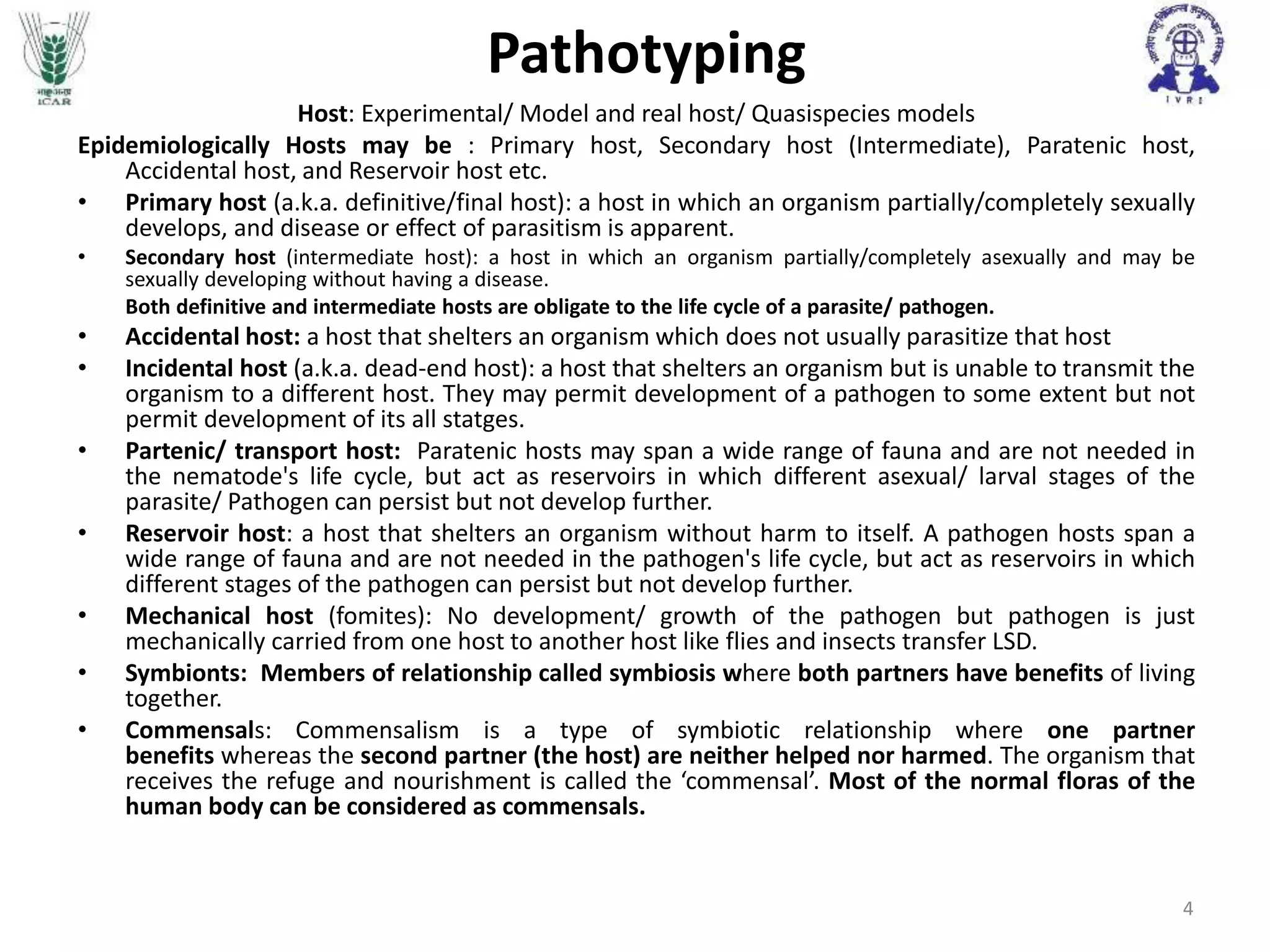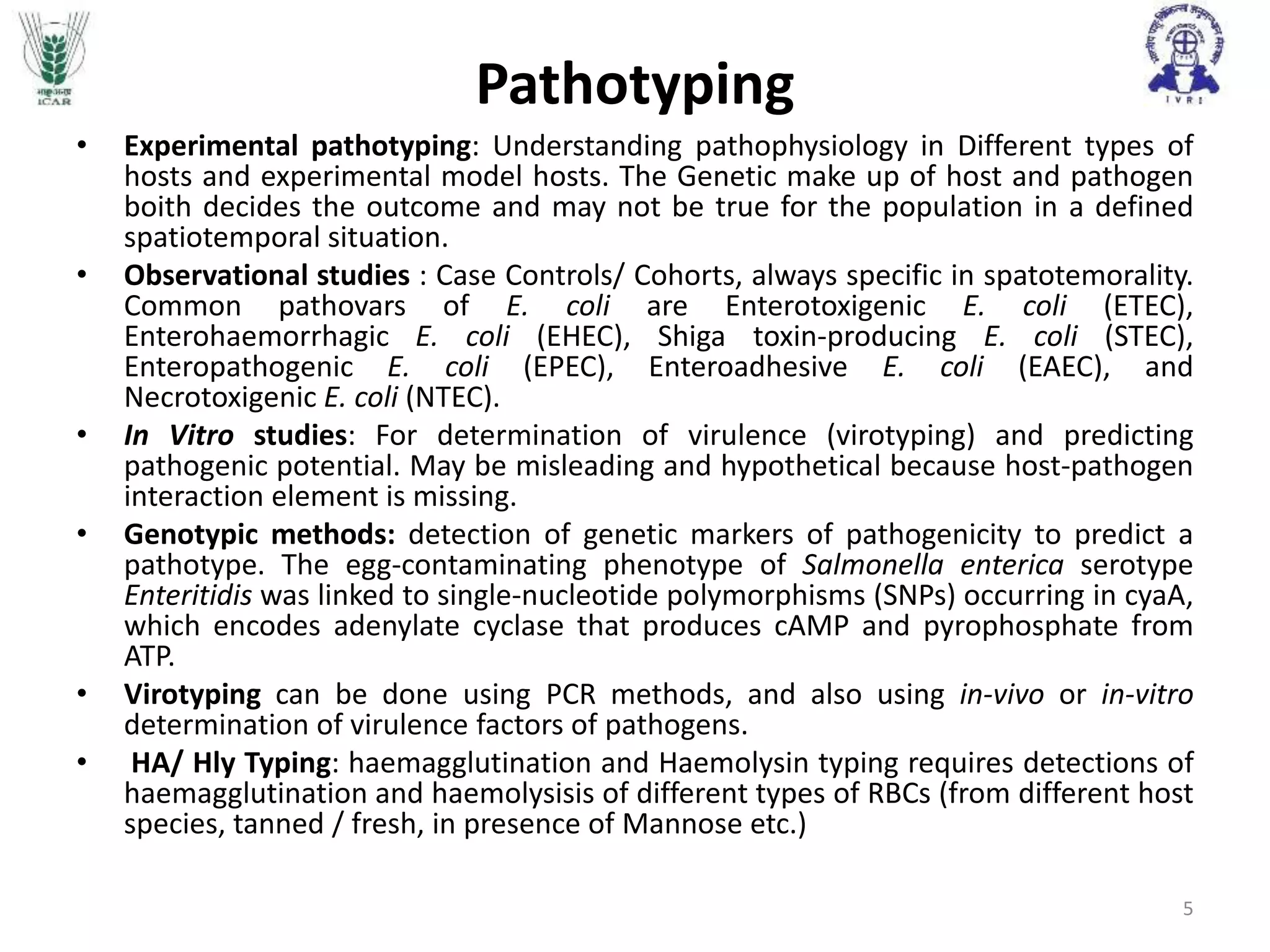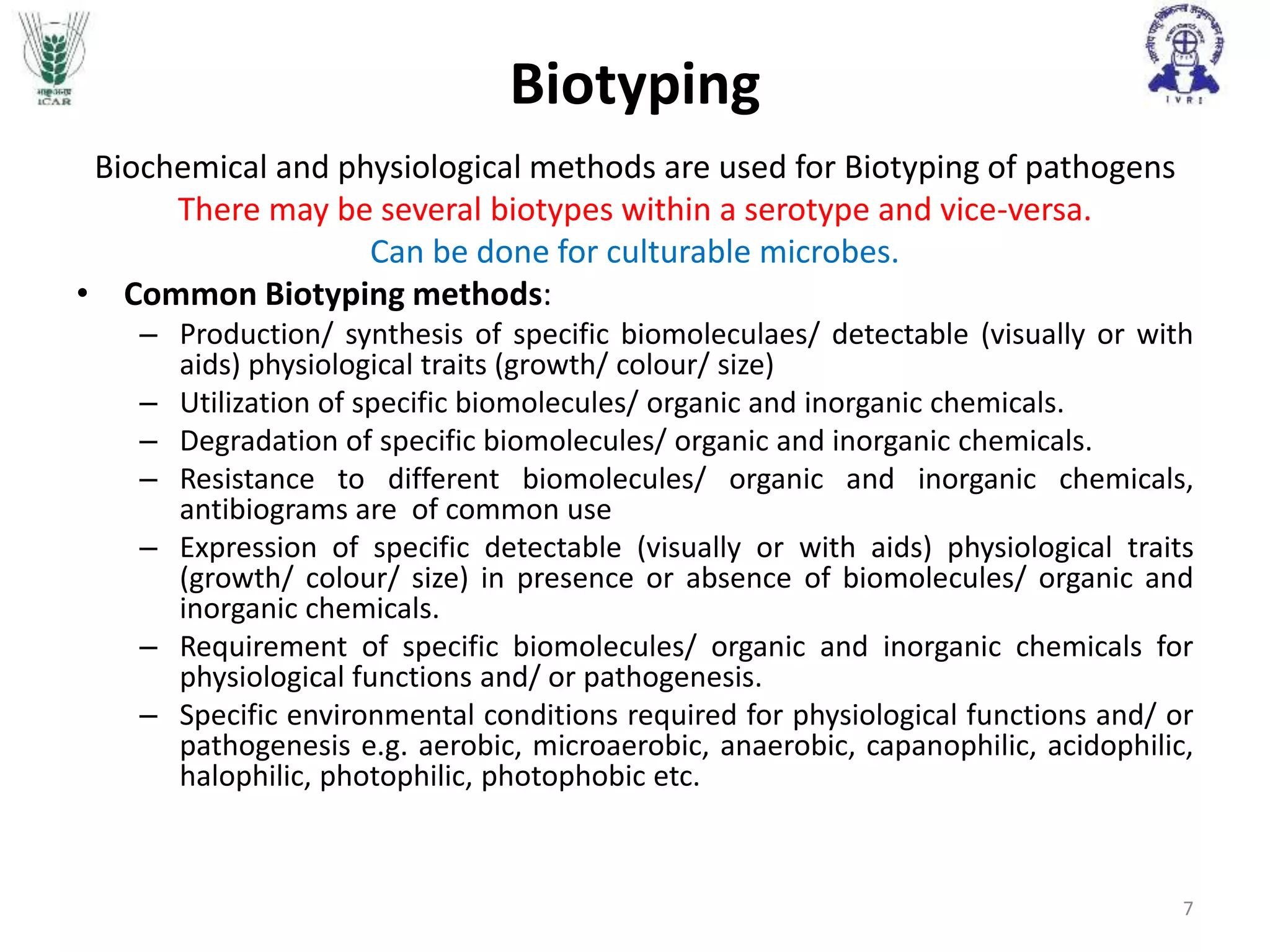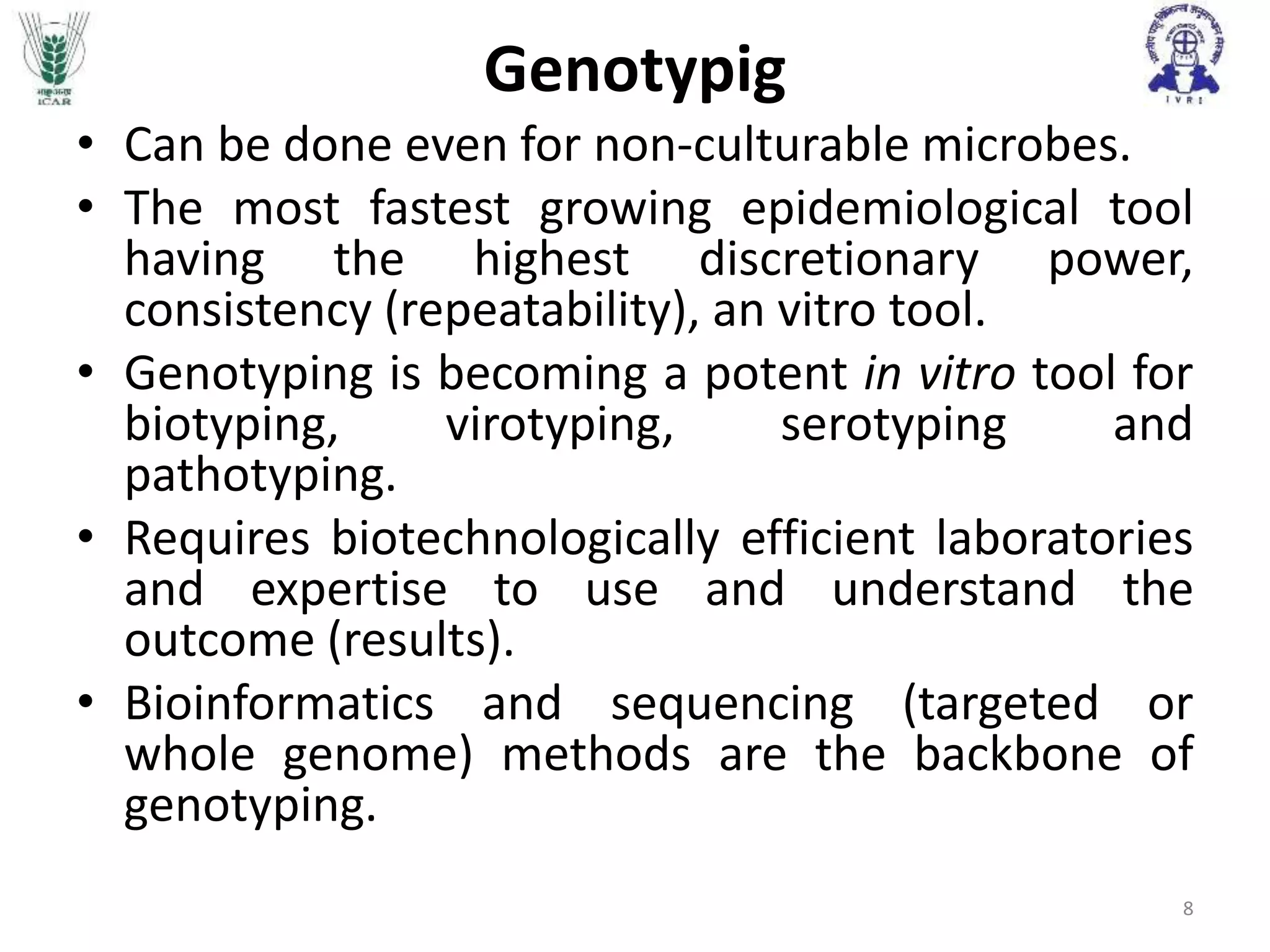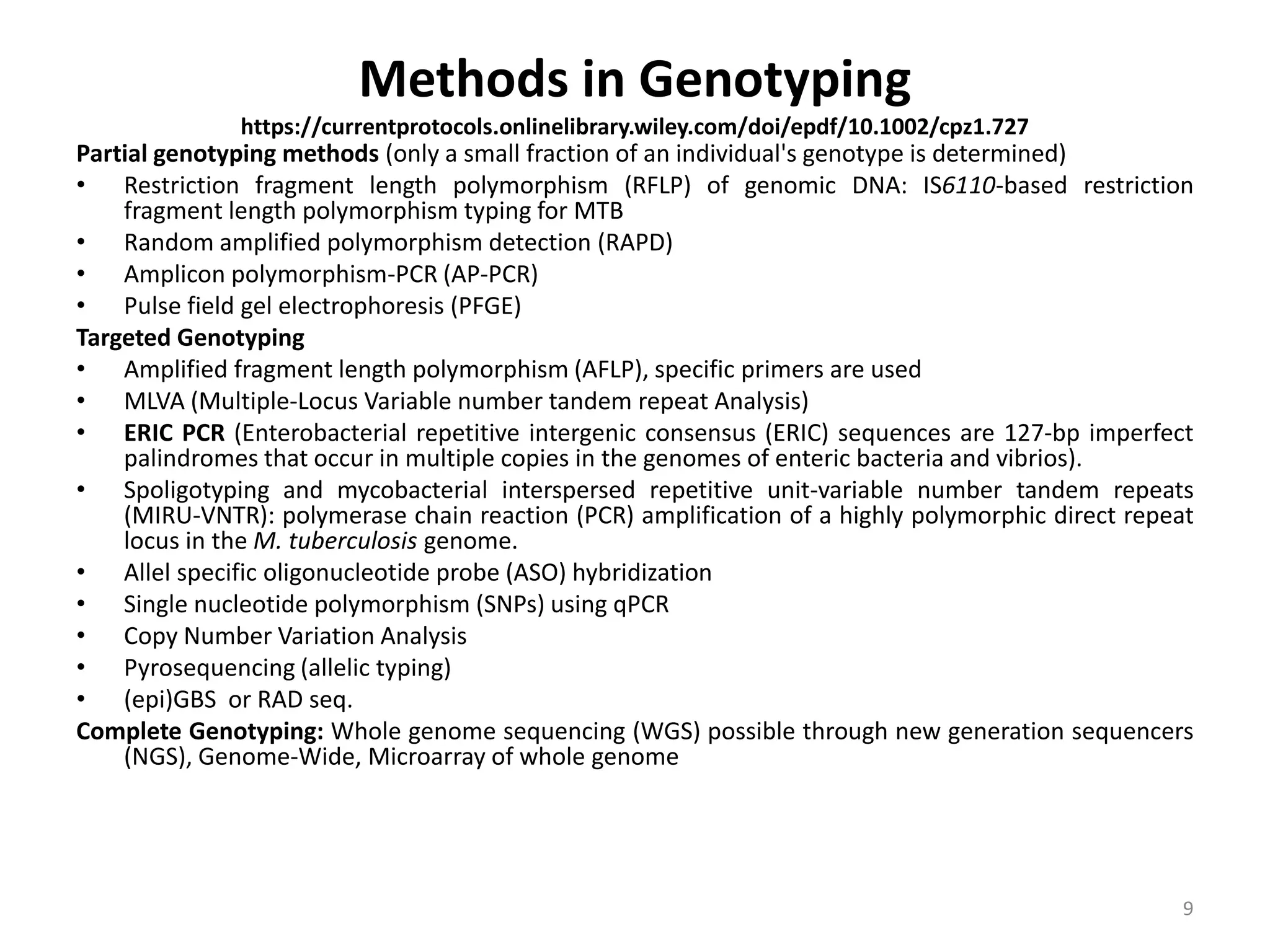The document details the detection and characterization of various pathogen types, including pathotypes, serotypes, biotypes, phenotypes, and genotypes, which are crucial for disease investigation and control. It describes definitions, methods for characterization, and the requirements for each pathogen type, along with the different hosts involved in pathogen life cycles. Additionally, it discusses experimental and observational studies, in vitro methods, serotyping and biotyping techniques, as well as modern genotyping technologies.
